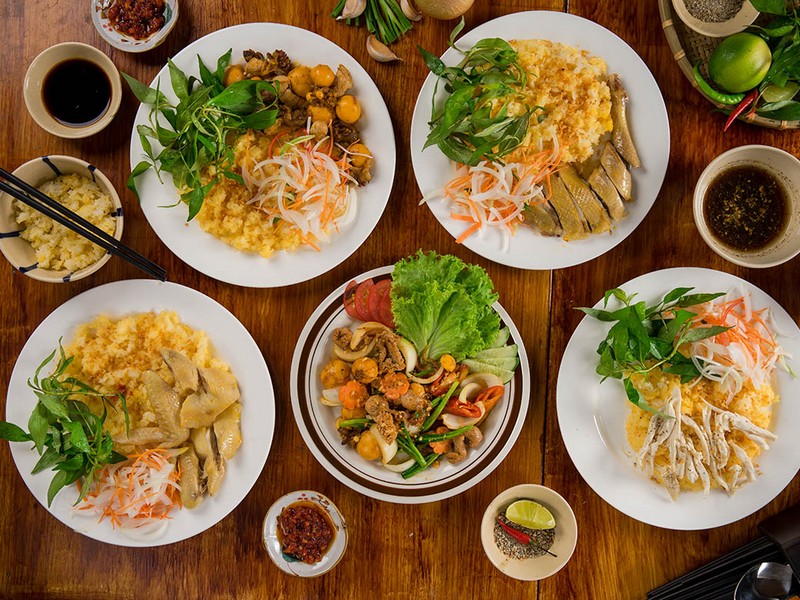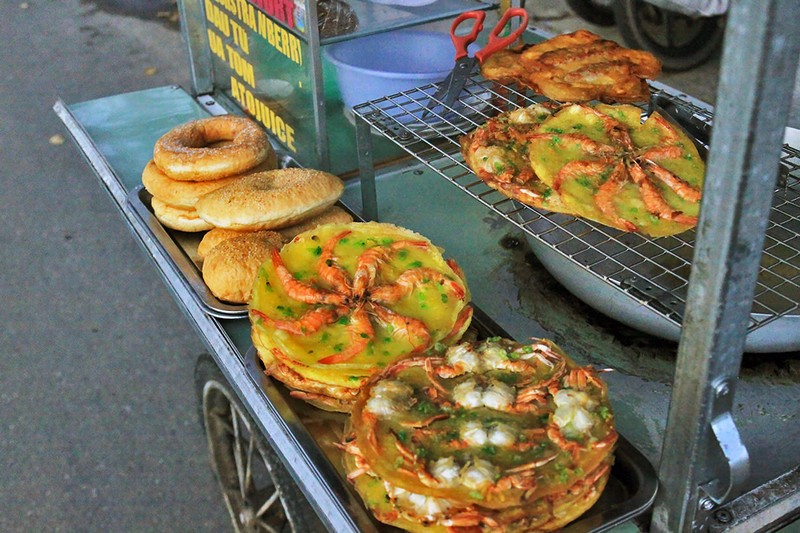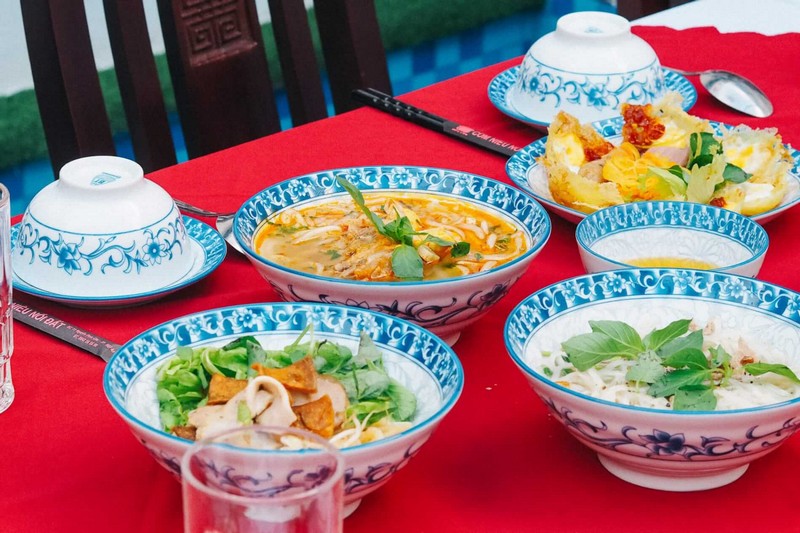Whenever people mention Hoi An cuisine, they are thinking of Cao Lau (a bowl of thick noodles), chicken rice, Ms. Phuong’s Banh Mi (Vietnamese sandwich) or more fancy dishes like White Roses sold in the old town. However Hoi An is larger than the 2 kilometre radius around the town centre. The total area of Hoi An is 30 times larger and that is not counting the nearby craft villages. And in this whole are a diverse culinary experience can be had.
[rpi]Hoi An’s cuisine seems simple at first but stay long enough and you will come to know its sophistication. Great food is not only delicious because of its flavours, but also its presentation, the origin of the ingredients and unique recipes that have been passed through the generations. More importantly these dishes must be prepared in a calm and gentle manner and cannot be rushed like fast food.

With simple ingredients you can find at any market, like eggplant and some green onion, Hoi An’s people can prepare several dishes just by giving a recipe a little twist. The most common way would be to thoroughly steam the eggplant, flatten and fry it while slowly adding sugar and fish sauce and continuously flipping it until all the flavours are absorbed. At a vegetarian restaurant called An Niem on Nguyen Duy Hieu street the chef slices the eggplant into small slices, puts them into a bowl similar to those used to serve obioidei fish, and simmers them in soy sauce and other spices. The chef lets the dish cook slowly on low heat as he is in no hurry. After about ten minutes, when the eggplant has been cooked, the chef will put the entire bowl on top of a small piece of coconut shell and serve it with some white rice to the guests. The diners, who have been waiting, open the lid right away to find a delicious smell waking up their senses.
Those who love seafood must visit the colourful An Bang Beach Village. The restaurant is decorated with honeycomb walls, Hoi An lanterns hang from the ceiling and bamboo chairs are waiting for guests. In the evening the owner even lights up some wax candles on the walls to set the mood. If guests do not know what to order the best thing is to ask for the owner’s suggestions. Similar to western restaurants, here an “item of the day” is on offer, which often depends on what the suppliers’ catch of the day was.
This particular morning, the owner’s wife bought some paradise fish. “What are they?” a customer from Saigon asked the chef. “They are delicious, but I don’t know how to explain what they are. I will make you a small dish to taste, if you like it, you can order more,” was the reply.
After quite some time in the kitchen, the chef brought out a steaming container filled with vegetables: bamboo shoots, pickled cabbage, beansprout salad, lady fingers, and of course slices of paradise fishes. After only a few bites, the customer praised: “This is strange, so different.” Her husband an overseas Vietnamese whose family is originally from Dien Ban, Dien Ngoc, Quang Nam province, grew quiet. As he ate, he gazed into a blank space as if remembering the dishes from his childhood.
After a conversation with my foreign friends who were visiting Hoi An, I accidentally discovered that most of their memorable culinary experiences were not at fancy restaurants where prices are in dollars. In fact, their most memorable experiences were always tasting dishes not available on the menus. The most interesting was when a group of French friends while biking to visit the longest bamboo bridge in Vietnam, was invited by a woman who had served them food to nap in her home on a cot handmade by her.
“No other ‘restaurant’ in the world would invite you to nap there, at a place in the middle of nowhere,” my friend enthusiastically said every time he talked about Hoi An’s cuisine. But one thing you should know, if my friend had hurriedly left after eating a bowl of noodles, instead of striking up a conversation with the owner, he would not have been invited to stay. The tip to the best culinary experience in Hoi An is simple: go outside of the busy streets and let fate guide you.
Bloggers around the world share their favourite Hoi An cuisine memory.

The Kitchen Paper: A nameless restaurant at 474 Cua Dai
Mary Loudermilk from the culinary blog The Kitchen Paper calls her favourite Hoi An Restaurant “???”. The Portland-based blogger confesses that she does not know what the restaurant located at No. 474 Cua Dai is really called, because she could not find a signboard anywhere. She wrote on her blog: “We accidentally discovered this restaurant on our way back from the beach, and we came back regularly. This place has the best Cao Lau in Hoi An”. The blogger’s tip? – “Friendly staff and the non-English-speaking owner always bring you a delicious bowl of noodles and a great smile.”

Somewhere pretty cool: A bowl of soup made by a saint, in a home with a view of the paddy fields in Cam Thanh
Ariane, a PhD candidate in Literature, and Mike, a software developer, are newlyweds. Three years ago after a couple of glasses of wine they had the idea to travel the world for a year. Hoi An was one stop during their 365-day journey. In Hoi An, Ariane and Mike stayed at an AirBnb, home of a “saint” named Hoa. Ariane explained on their blog: “A Saint as in she cooks divinely and is probably the most outstanding woman I’ve ever met after my mom. I was vegetating in my bed, cussing against all Gods of the universe, holding my belly and popping Gravol like candies. I heard a knock on my door: it was Hoa with soup. A soup made of the most beautiful, gluey rice and carrots and pork broth you’ll ever taste. Because it’s good for the belly. “Eat it, eat it all” she instructed me. Well guess what… Today I feel like a butterfly.”
Lena & Ami | Wanderlust Tips | Cinet

